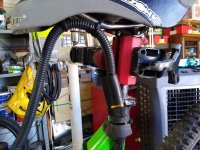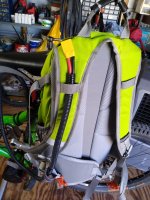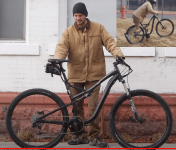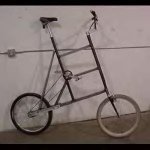TNC said:HrKlev, from your post I take it that you also ride a dirt motor. I'm curious as to which throttle system for the mid-drive that you use. I was able to live with the universal Bafang thumb throttle, but the twist grip throttle put me back at home as a dirt motor guy. Like you, I rarely use the throttle. However, in those occasional, critical spots where an unexpected stall out starts to occur or just a step-up that isn't going to happen with pedal-only, the throttle is a pleasure.
On your statement that "there is no way around relying on the throttle to get around technical stuff", I think that may depend on the rider and what they're able to do with PAS only. I'm fairly new to emtb's but not MTB's. I notice the more I ride this mid-drive Nomad, the more I get used to what PAS is capable of vs. my old pedal-only routine. Depending on how one has the program tuned, and which display level one selects, the PAS is pretty effective if you're in the right rear cog...that part not being any different from pedal-only off roading.
Of course it would be pretty presumptous of us to think our individual riding preferences, bikes, and components would fit every rider out there...LOL! We know better. Rider skill, age, and type of bike all come together to make the options all over the board.
Yeah, I have a dirt bike, that is not getting enough usage... I ended up with a thumb throttle on left side, together with the pas level buttons. So dropper post had to go to right side together with gear shifter. Did try out both half and full twist on my first bike with cadense pas setup. For the ability to apply the correct amount of throttle, the full twist was way above the rest, but I do not like to have grips that twusts on my pedal bikes (I hate grip shifts as well). So thumb throttle it was.
I am considering making it a push-button now that I have the torque sensor working like I want. Thinking it could apply like 100w or so for walk assist. But I havent decided yet. It was pretty sweet to have the throttle when the freewheel stopped working, so I could throttle it home...





